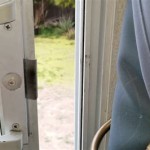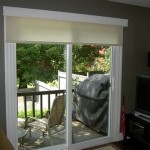How to Clean Patio Umbrella Mold
Patio umbrellas are invaluable for providing shade and comfort during outdoor activities. However, prolonged exposure to moisture, humidity, and organic debris creates a conducive environment for mold and mildew growth. This not only detracts from the aesthetic appeal of the umbrella but can also pose health risks for individuals sensitive to mold spores. Regular cleaning and preventative measures are essential to maintaining a mold-free and enjoyable outdoor space. This article provides a comprehensive guide to effectively cleaning mold from patio umbrellas.
Identifying Mold and Mildew
Before attempting any cleaning methods, it is crucial to differentiate between mold and mildew. Both are types of fungi that thrive in damp environments, but they exhibit distinct characteristics. Mildew typically appears as a white or gray powdery substance on the surface of the fabric. It is generally easier to remove than mold and often does not penetrate deep into the material. Mold, on the other hand, presents in various colors, including black, green, brown, and even red. It often has a fuzzy or slimy texture and can deeply penetrate the fabric fibers, making it more challenging to eradicate.
The presence of an unpleasant, musty odor is another indicator of mold or mildew growth. Inspect the entire umbrella, paying close attention to areas that are frequently exposed to moisture or shaded from direct sunlight. These areas are more susceptible to fungal growth. Understanding the specific type of growth present will help determine the most effective cleaning approach.
Essential Cleaning Supplies and Safety Precautions
Effective mold removal requires the proper cleaning supplies and adherence to safety precautions. The following materials are generally needed:
- Cleaning Solution: Options include diluted bleach (1 part bleach to 10 parts water), white vinegar, commercial mold and mildew removers specifically designed for outdoor fabrics, or a mixture of dish soap and water. The choice of solution depends on the severity of the mold and the type of fabric.
- Soft-bristled Brush: A soft-bristled brush is essential for gently scrubbing the affected areas without damaging the fabric. Avoid using abrasive brushes or scouring pads, as these can cause tearing or discoloration.
- Spray Bottle: A spray bottle is useful for applying the cleaning solution evenly over the umbrella surface.
- Garden Hose: A garden hose with a spray nozzle is needed for rinsing the umbrella thoroughly after cleaning.
- Protective Gear: Wearing gloves, a mask, and eye protection is highly recommended to prevent skin irritation, inhalation of mold spores, and exposure to harsh cleaning chemicals.
- Clean Cloths or Sponges: Clean cloths or sponges are useful for wiping away excess cleaning solution and drying the umbrella.
- Ladder or Step Stool (if needed): A ladder or step stool may be necessary to reach the top of the umbrella. Exercise caution when using these tools.
Safety precautions are paramount when handling mold and cleaning chemicals. Work in a well-ventilated area to minimize the inhalation of fumes. Avoid direct contact with skin and eyes. If irritation occurs, rinse the affected area immediately with water and seek medical attention if necessary. When using bleach, always dilute it properly and avoid mixing it with other cleaning agents, as this can create harmful gases. Store cleaning supplies out of reach of children and pets.
Cleaning Methods for Patio Umbrella Mold
Several methods can be employed to clean mold from patio umbrellas. The appropriate method depends on the severity of the mold infestation and the type of umbrella fabric. Always test the chosen cleaning solution on a small, inconspicuous area of the umbrella first to ensure it does not cause discoloration or damage.
Method 1: Mildew Removal with Soap and Water
For light mildew infestations, a simple solution of dish soap and water may be sufficient. Mix a few drops of dish soap with warm water in a bucket. Using a soft-bristled brush or sponge, gently scrub the affected areas of the umbrella. Rinse thoroughly with a garden hose and allow the umbrella to air dry completely in direct sunlight. This method is generally effective for removing surface mildew and preventing its recurrence.
Method 2: Vinegar Solution for Moderate Mold Growth
White vinegar is a natural and effective mold killer. Its acidic properties help to break down mold spores and inhibit their growth. Mix equal parts white vinegar and water in a spray bottle. Spray the solution liberally onto the affected areas of the umbrella and let it sit for at least 30 minutes. Use a soft-bristled brush to scrub away the mold, and then rinse thoroughly with a garden hose. Allow the umbrella to air dry completely in direct sunlight. Vinegar has a strong odor, but it will dissipate as the umbrella dries.
Method 3: Bleach Solution for Stubborn Mold
For persistent or severe mold infestations, a diluted bleach solution may be necessary. Exercise caution when using bleach, as it can discolor or damage certain fabrics. Mix one part bleach with ten parts water in a bucket. Apply the solution to the affected areas of the umbrella using a spray bottle or sponge. Let it sit for 10-15 minutes, and then scrub gently with a soft-bristled brush. Rinse thoroughly with a garden hose, ensuring that all traces of bleach are removed. Allow the umbrella to air dry completely in direct sunlight. Always wear protective gear when handling bleach and avoid contact with skin, eyes, and clothing.
Method 4: Commercial Mold and Mildew Removers
Several commercial mold and mildew removers are specifically formulated for outdoor fabrics. These products often contain a blend of chemicals that effectively kill mold spores and prevent their recurrence. Follow the manufacturer's instructions carefully when using these products. Typically, this involves spraying the solution onto the affected areas, letting it sit for a specified period, and then rinsing thoroughly with a garden hose. Ensure that the product is safe for use on the specific type of umbrella fabric.
Method 5: Pressure Washing (Use with Caution)
Pressure washing can be an effective method for removing mold from patio umbrellas, but it should be used with caution. The high pressure can damage delicate fabrics or cause the seams to tear. If using a pressure washer, set it to a low-pressure setting and use a wide-angle nozzle. Hold the nozzle at a safe distance from the umbrella fabric and move it in a smooth, even motion. After pressure washing, allow the umbrella to air dry completely in direct sunlight.
Preventing Future Mold Growth
Preventing mold growth is crucial for maintaining the cleanliness and longevity of patio umbrellas. Several preventative measures can be implemented:
Regular Cleaning: Clean the umbrella regularly, even if there are no visible signs of mold or mildew. Wipe down the fabric with a damp cloth or sponge to remove dirt, debris, and moisture. This helps to prevent the accumulation of organic matter that can fuel mold growth.
Proper Storage: When not in use, store the umbrella in a dry, well-ventilated area. Avoid storing it in damp or humid environments, such as a garage or shed. A fabric cover can help protect the umbrella from dust, dirt, and moisture.
Ventilation: Ensure adequate ventilation around the umbrella. Avoid placing it in areas where air circulation is restricted. This helps to reduce humidity and prevent the buildup of moisture.
Water Repellent Treatments: Apply a water repellent treatment to the umbrella fabric to make it more resistant to moisture. These treatments create a barrier that prevents water from penetrating the fabric fibers, reducing the likelihood of mold growth.
Sunlight Exposure: Allow the umbrella to dry completely in direct sunlight after it gets wet. Sunlight has natural antimicrobial properties that can help to kill mold spores and prevent their growth.
Addressing Leaks: Repair any leaks in the patio area or around the umbrella base. Leaks can create damp conditions that promote mold growth.
Prompt Action: If mold or mildew is detected, address it promptly. The longer it is left untreated, the more difficult it will be to remove. Regular inspection of the umbrella will help to identify and address mold growth early on.
By following these cleaning methods and preventative measures, it is possible to effectively remove mold from patio umbrellas and maintain a clean, healthy, and enjoyable outdoor space. Consistent maintenance and prompt action are key to preventing future mold growth and prolonging the life of the umbrella.

Project Shade 5 Fantastic Tips About How To Clean Mould Off An Outdoor Umbrella

How To Clean Your Patio Umbrella Cover In The Wash Machine

How To Clean An Outdoor Umbrella Shorts

Removing Mould And Mildew From Your Garden Umbrella Lakeland Furniture Blog

How To Clean A Patio Umbrella So It Looks Almost New Sunnydaze Decor

How To Clean Your Outdoor Umbrella

How To Clean Your Outdoor Umbrella

How To Clean A Patio Umbrella Complete Guide For Maintenance And Longevity

How To Clean A Patio Umbrella 7 Simple Steps Follow

Why How To Clean And Your Patio Umbrella Cantilever More Purpleleaf News Blog








